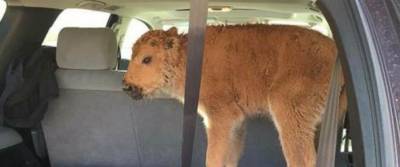LCA Blog
Look But Don’t Touch – What to Do if You See a Baby Animal in the Wild
by Cynthia Baseman
A few weeks ago in Yellowstone National Park, tourists transported a newborn bison calf in their car because they thought the animal “was cold.” After numerous unsuccessful attempts to reunite the calf with its herd, park rangers euthanized the animal.
Whether you live in a rural setting or a city, spring and summer seasons bring an uptick in baby wild animal sightings. What do you do if you stumble upon a newborn wild animal? Leave it alone.
As irresistible as baby animals may be, they are not toys, and human/wildlife interactions should be avoided unless the animal is injured, in a life-threatening situation or abandoned (and even in these cases, a wildlife professional should be the only human making contact).
By approaching, feeding or taking selfies with wild animals, you threaten their lives. Handling an animal can be fatal to them, even with the best of intentions. Human-animal interactions can also deprive animals of crucial skills to survive in the wild. Or, as in the recent case of the baby bison, the baby might never resocialize with their own species.
There is another good reason to keep your distance -- your own safety. Adult animals are fiercely protective of their young and will act aggressively to defend them. Just because you don’t see the parents of a baby animal doesn’t mean they aren’t there, hidden from your view.
In addition, wild animals carry potentially fatal diseases like rabies and Rocky Mountain Spotted Fever. As a rule of thumb, the National Park Service recommends visitors keep 25 yards away from non-predatory wildlife like bison or deer and 100 yards from bears, wolves or other animals known to attack humans.
What do you do if you’ve determined that a baby animal has been abandoned or is injured?
Contact an animal rehabilitator. Do not attempt to feed it. Wild animals have very specialized diets and feeding them the wrong food may kill them. If you are unable to find an animal rehabilitator in your area, contact your state wildlife department, local humane society, department of animal services or veterinarian who can refer you to someone.
When you subscribe to the blog, we will send you an e-mail when there are new updates on the site so you wouldn't miss them.
